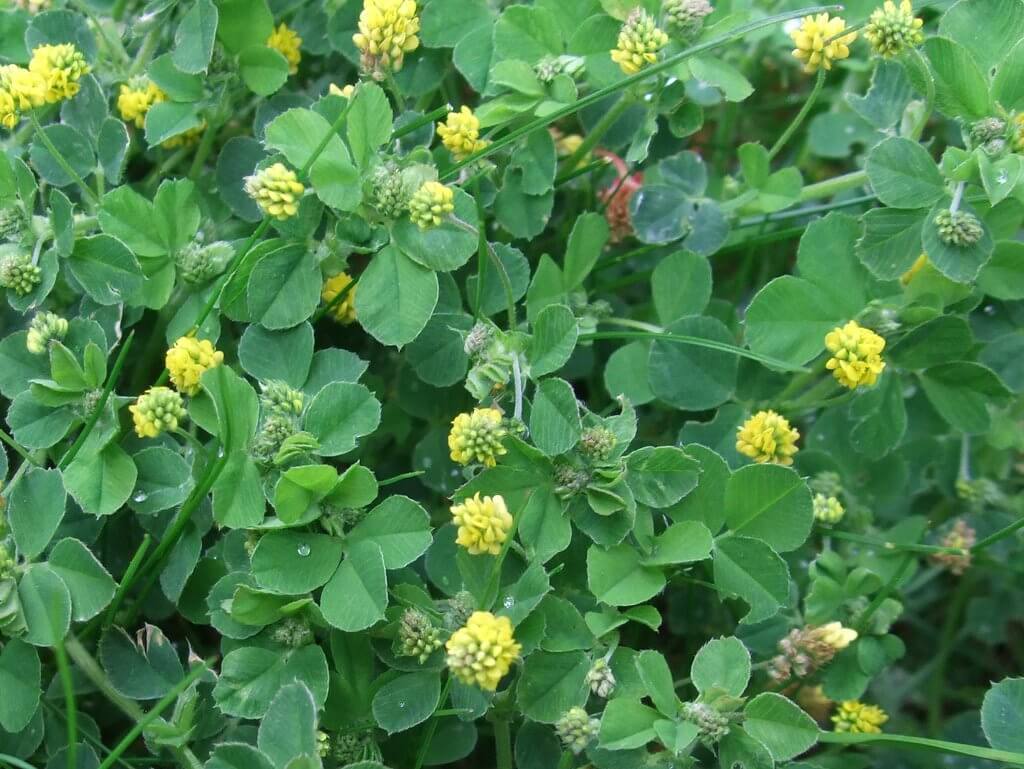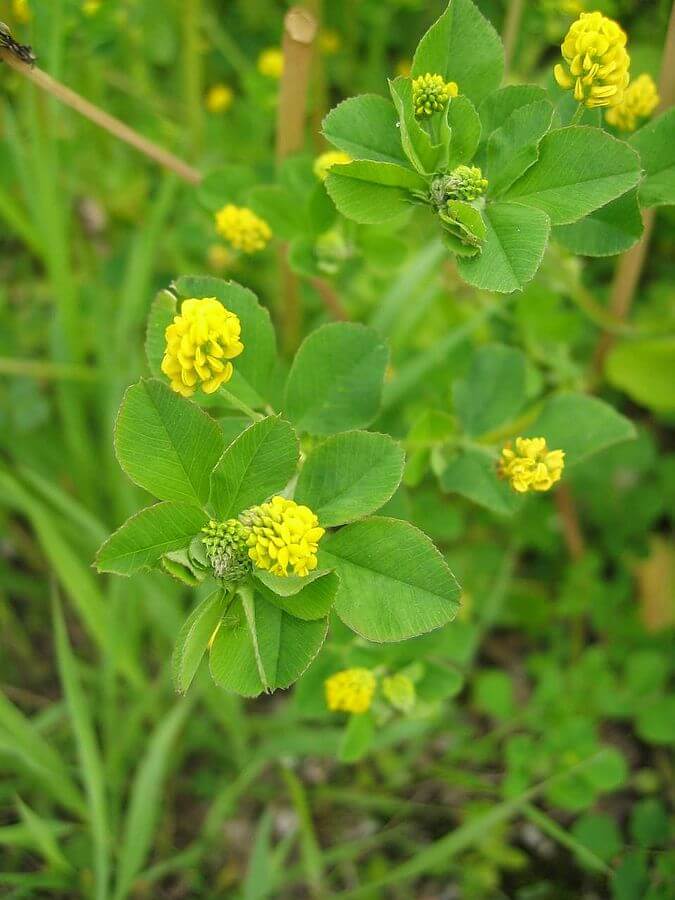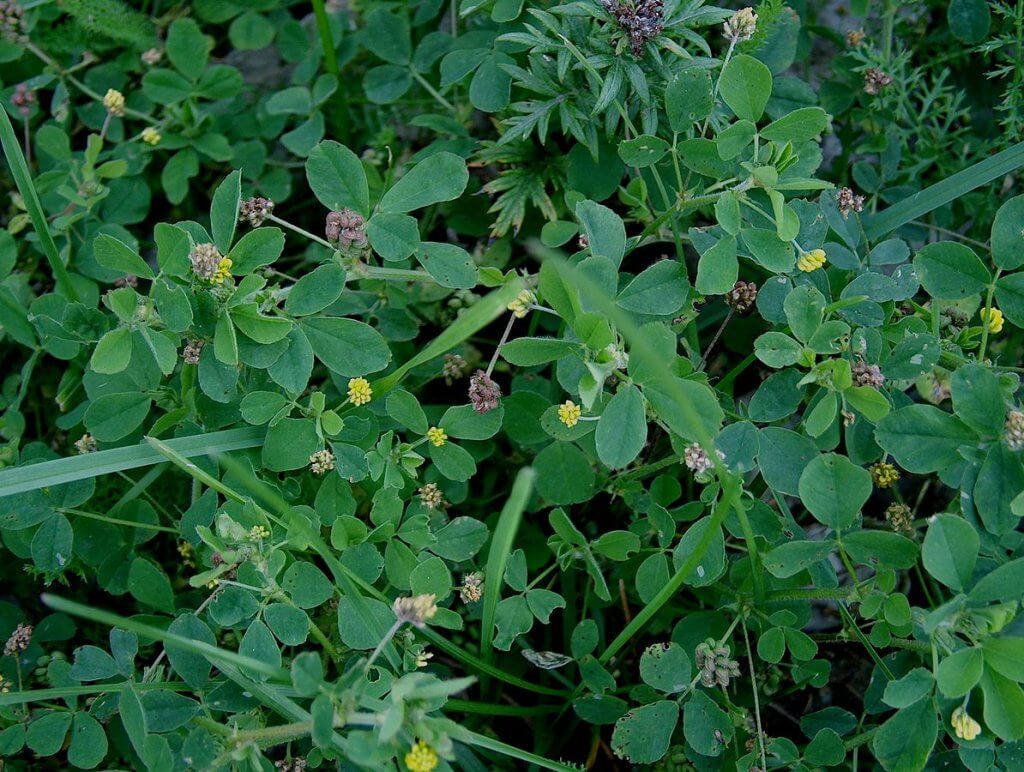
(Photo by: Simon/Flickr)
Black medic (Medicago lupulina) is often considered a weed and a mild nuisance in the garden. However, if you see this plant invading your garden, don’t immediately spray it with chemicals! Instead, you should actually be happy. This seemingly annoying weed is actually edible and rich in nutrients. It even has some wonderful medicinal qualities, making it a nice herbal remedy.
Also known by its other names, yellow trefoil, hop clover, or black clover, black medic originally came from Europe and Asia. People later introduced this plant to North America as a crop for fodder. Since then, this plant has naturalized and become a common sight in dry, sunny roadsides and meadows.
Edibility and culinary use
In Europe and Asia, where this plant is native, black medic leaves are often used as a potherb. They’re cooked and eaten much like other greens, such as spinach and collards. The best way to cook these leaves is to lightly sautee or stir-fry them, but they can also be added into soups and stews. Additionally, you can throw in the leaves into a bowl of salad, but most people find them too bitter when eaten raw.
Black medic seeds are also edible. Historians believed that Native Americans roasted these seeds and ground them to make flour. However, there have been some concerns that the seeds may contain compounds that interfere with the digestion of proteins. But these compounds will be destroyed if the seeds are sprouted first. This plant belongs to the same genus as alfalfa. While not as nutritious as alfalfa sprouts, black medic sprouts can be cooked and eaten similarly.

(Photo by: Tigerente/Wikimedia Commons)
Lastly, if you’re a beekeeper, you’ll be happy to find that black medic flowers can be used in honey production. Honeybees seem to love these flowers. Honey made of these flowers tends to taste nice and sweet as well.
Health benefits
Though not as powerful as its cousins, red clover and alfalfa, black medic is quite nutritious. Every 100g black medic leaves contain around 23g of protein and around 25g of fiber, making this herb an amazing source of protein and fiber. Due to its fiber contents, this herb can help promote a healthy digestion system. This plant also has a mild laxative effect, making it a great natural remedy for constipation. These leaves will also make you feel full longer and aid weight loss.
Black medic is also rich in essential minerals, such as calcium, phosphorous, potassium, and magnesium. Including this herb in your daily diet will certainly benefit you in the long run. This herb has also shown antibacterial properties. Thus, making it a nice herbal remedy for mild bacterial infections and bacteria-related diseases. Lastly, this herb may assist the body’s blood clotting process which means it can help stop bleeding.
Cultivation
Despite being considered a weed, this sun-loving plant can actually be a useful garden plant. Aside from being a great and nutritious food source, black medic can also improve the quality of your garden’s soil. This plant’s roots can form a symbiotic relationship with nitrogen-fixing bacterias. As a result, the soil on which this plant grows become more fertile over time. This means black medic is an effective green manure cover crop.
Black medic is a short-lived annual plant which will die after flowering. But, since it produces a large number of viable seeds, it can behave as if it were perennial. This plant dislikes acidic soils and shades. So, try to grow it in a sunny location with neutral and alkaline soil. It thrives best in dry to moist, well-drained soil which contains clay, sand, or loam.
The seeds can be sown in spring or fall, but spring seems to be the best time for growing black medic. The plants will have a harder time growing if the seeds are sown in the fall. Before sowing, pre-soak the seeds in warm water for 12 hours to ensure germination. Sow the seeds directly and lightly cover them with soil.

(Photo by: Anneli Salo/Wikimedia Commons)
Mow or harvest them often to prevent them from overtaking your garden. Lastly, black medic will survive over the winter and flower the following spring. The flowers will attract pollinators to your garden and help feed the local bee population.
Cautions
Since this herb assists blood clotting, it should be avoided by people who are taking blood thinning medications. This herb also has a mild laxative effect that shouldn’t be a problem when eaten moderately. However, overconsumption may cause diarrhea.
Much like alfalfa, black medic may also contain some estrogenic compounds. Therefore, it’s best for pregnant and breastfeeding women to avoid this herb. It’s also better not to give this herb to children due to a lack of research on its effects on young children. As with any other herbs, it’s best to consult a doctor before consuming this herb.
Conclusion
Despite its various uses, black medic is still a widely undervalued crop. Instead of considering them a weed and getting rid of them, we should start utilizing them, both as a food source and as a nitrogen-fixing cover crop. In the end, we should use what nature gives us to the best of our ability.
---------------
Writen by Cornelia Tjandra
Cornelia is a freelance writer with a passion for bringing words to life and sharing useful information with the world. Her educational background in natural science and social issues has given her a broad base to approach various topics with ease. Learn more about her writing services on Upwork.com or contact her directly by email at cornelia.tjandra@gmail.com
Many of our readers find that subscribing to Eat The Planet is the best way to make sure they don't miss any of our valuable information about wild edibles.
See our privacy policy for more information about ads on this site







3 Responses
Thanks for the info, black medic grows in my lawn and I wanted to know if it can be eaten. I appreciate your guidance.
Can you tell me if medicago lupulina is toxic for dogs?
I believe it is non toxic to dogs but can cause stomach upset. Offer water if ingested by your dog